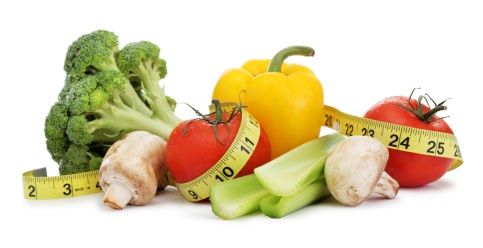You can’t go down the street or through a shopping mall without seeing a nutrition supplement store these days, can you? With all those stores out there, it must mean supplements are important and we should all be buying them, then, right?
Well ……..maybe. I’ll get to the answer in just bit.
I’m an exercise expert who knows a good deal about nutrition, but I would never claim to be a nutrition expert myself. When I need answers to important nutrition questions I can’t answer, I look to other colleagues I consider experts in the nutrition field.
One of my go-to people for all things nutrition is Registered Dietician, Jayson Hunter. Jayson is one of the founders of the JayLabPro nutrition supplement company (formerly Prograde Nutrition). He has been a great source of advice and support to lifeSport Fitness for over 10 years. Now, you might be wondering, why would a Registered Dietician start a supplement company? Shouldn’t he be consulting with people about real food!!??
Yes—he should, and he does. But he decided to take it a step further. Jayson got frustrated with the lack of quality, science-based products on the market about 10 years ago and decided to team up with a couple of other fitness colleagues to develop products that were safe, effective and high quality. He also believed that many people were OVER-supplementing their diets and wanted to create a company that promoted a “food first” philosophy with supplementation as a secondary measure. JayLabPro puts a lot of effort into nutrition education so that their customers can become better eaters. I have to admire that.
This is one reason we’ve been recommending JayLabPro products for many years. Quality people with high integrity making quality products, and providing solid consumer education. What they say is in the bottle really IS in the bottle. I know that I am sending our clients to a solid resource.
So – about the question at hand: Should we all be supplementing?
Our answer: Yes— but food comes first.
Your first defense against obesity , poor health and chronic disease is solid, whole food nutrition. Supplements won’t do much for your health if you have a poor diet (aside from protect you against deficiencies). Jayson’s mantra is: “Build a decent nutritional foundation through food first before you take any supplements, or the supplements won’t help at all”
Even though we all try to eat healthy, Jayson believes there are 2 areas in our nutritional foundation that are often the weakest points (and this has been backed up by the USDA and other nutritional organizations)
1. Vegetable intake: After all these years of teaching the importance of an abundance of vegetables, society still only eats about 2 servings a day instead of the recommended 6-8. Even the best of eaters still struggle with getting in a wide variety of colorful vegetables daily.
If you’re not getting a consistent 6-8 servings of vegetables every day, Jayson recommends a solid multivitamin that contains fruit and vegetable extracts. He still stresses food first – but suggests the supplement to get additional nutrients that you’re missing due to having a lower intake of vegetables.
2. Omega-3 fatty acid intake: There are thousands of research studies that have shown the benefits of Omega-3 fatty acids and how our current intake is lopsided with a 30 to 1 ratio of Omega-6 fats(disease promoting) to Omega-3 fats.
Consuming large quantities of Omega 6 fats, scientists believe, may trigger inflammation (which can lead to disease and poor health). By consuming minimal Omega 6 fats and increasing Omega 3 fats in our diet, we may be helping to decrease internal inflammation.
Jayson recommends consuming cold water fatty fish 3-4 times a week along with other foods that contain Omega-3 fats (like Chia seeds). For people who don’t eat fish often, a good Omega-3 supplement is beneficial in strengthening that weak point of our nutritional foundation. Food first — eat some fish and other Omega-3 containing foods, but supplement to make that Omega 6 to Omega 3 ratio healthier.
The moral of the story: Food first to the best of your ability, and supplement where your own personal diet falls short.
If you want to save 18% on JayLabPro products, Jayson has given me a coupon code to offer you — but it’s only good until Monday, August 7th at midnight!
Head over here: https://lifesportfitness.jaylabpro.com/
And use the code AUG18 when checking out.
Yours in health,
Becky





 It seems everyone is looking for an easy fat loss strategy these days. Although it isn’t easy to perform, I highly recommend High-Intensity Interval Training (HIIT) for exceptional fat loss results.
It seems everyone is looking for an easy fat loss strategy these days. Although it isn’t easy to perform, I highly recommend High-Intensity Interval Training (HIIT) for exceptional fat loss results.




 Talk to 10 people and you’ll get 10 different opinions on the best way to get fit.
Talk to 10 people and you’ll get 10 different opinions on the best way to get fit. As we approach one of our planned hiatus weeks at our
As we approach one of our planned hiatus weeks at our 